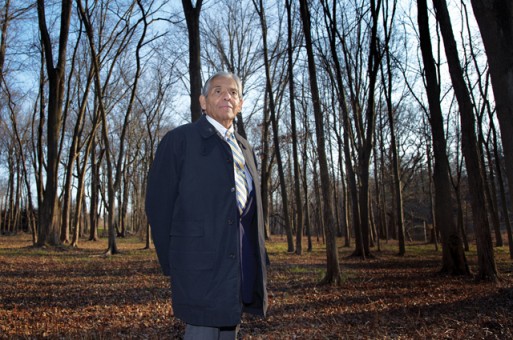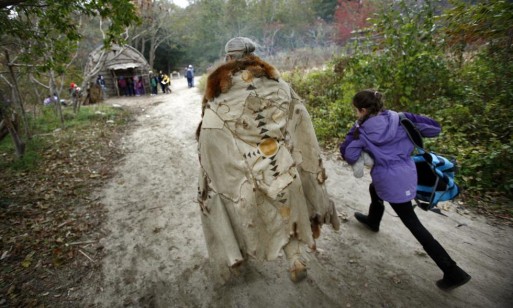With Thanksgiving underway, we look to the funeral traditions of perhaps the most famous of the Native American peoples: the Wampanoag. It is estimated that these Native Americans lived in the New England region for over 10,000 years, with over 60 tribes in their nation. Of course, when batches of colonists began to arrive in 1620, the tribes faced unimagined obstacles — particularly holding onto their traditions. The Wampanoags had established an immense presence in the region; it was the richest in cultural traditions that the colonialists had never seen. And it is among this heritage — that is so famous for its creation myths, incredible medicine and health advances and culture of story-telling — that we can also uncover the Wampanoag end of life beliefs.
Bring up Thanksgiving and one inevitably brings up the sensitive discussion of the Native American plight — the ensuing tragedy inflicted upon the Wampanoags and countless others by colonists who, as we all learned in elementary school, left their own homeland to escape persecution. Today, a group of Native Americans gathers on Cole’s Hill in Plymouth every Thanksgiving for a “National Day of Mourning,” in which they “honor Native ancestors and the struggles of Native peoples to survive today.”
Needless to say, when we look down at our turkey dinner we can’t help but think about a tense historical relationship. Perhaps in revisiting the Wampanoag traditions surrounding death, we can make an effort – however miniscule – to keep some facets of their cultural identity intact.
“Needless to say, when we look down at our turkey dinner we can’t help but think about a tense historical relationship.”

Wampanoag historian Chester Soliz; one among many in the tribe’s community who aims to preserve their culture. Credit: Tufts Now
According to Wampanoag legend, the islands of Nantucket and Martha’s Vineyard were created by the hand of a giant named Maushop. By emptying his shoe of sand, Maushop created not only territories for the Native Americans, but continued to teach them the ways to cultivate corn and survive. So, when a Wampanoag passed away, they would be buried with the tools necessary to cultivate their own land in the afterlife. The family would all gather, faces painted in black soot for mourning, to lament and grieve openly beside their loved one.
The actual mat the family member passed away on was placed over the burial site, along with the bowl from his last meal. Beside the burial site, a final mark of remembrance would be hung on a surrounding tree: a fine coat of animal skin.
“Beside the burial site, a final mark of remembrance would be hung on a surrounding tree: a fine coat of animal skin.”
“The Chappaquiddick Wampanoag believe in the cycle of life,” states a non-profit Wampanoag organization today (The Chappaquiddick Tribe Of The Wampanoag Indian Nation, Corp.) and that includes coming together in the face of death. Staying together is a process, says the organization, but it is also “[their] duty to act upon [their] beliefs… to promote cultural preservation, [to] embrace [the] Wampanoag language and repatriation and protection of ancestral burial sites.”
Related SevenPonds articles:
- Traditional Burial Rites for the Maori
- Unlocking the Meaning of Dia de los Muertos
- Preserving the Totem Poles of the Northwest

 Wampanoag Burial Traditions
Wampanoag Burial Traditions





 Octogenarian Author Jane Seskin Offers a Model for Aging and Living Well
Octogenarian Author Jane Seskin Offers a Model for Aging and Living Well

 Are “Rage Rooms” a Healthy Outlet for Grief and Burnout?
Are “Rage Rooms” a Healthy Outlet for Grief and Burnout?















cool
Report this comment
I have completed a 1/12 scale radio controlled model of the 1799 Essex (US Warship) built in Essex County, MA. Upon researching all the frigates specifics, we have come upon an unidentified Indian figurehead in “Anatomy of the Ship Essex” by Portia Takakjian- without any historical reference. We would like to know if your tribe (Wampanoag), might have the friendlies with the residences of Essex county at that time. We would like to keep our 18.5 ft model of the 1799 Essex as accurate as possible, before adding the Indian figurehead.
You may check the model out on Facebook – Custom Radio Controlled Boats !
Any history would also be helpful as we provide education on the frigate .
Thank you, in advance, for any assistance you can provide.
Report this comment
They were several Tribes in the Essex County region at that time, Please make contact with MCNAA (Mass Center for Native American Awareness) to investigate further. The Salem Region, and former towns would be the Massachusetts Ponkapog, but further North past into the Cape Ann, Coastal, and NH would be Pennacook with various bands
Report this comment
Hi Bob,
Try contacting the good people at Plimoth Plantation. They are historically accurate and will assist with your cause.
Report this comment
I’m glad I read the comments!
I’m a Wampanoag Indian, I love my culture and we have a beautiful history!
My family has ACCURATE INFO and a great amount of knowledge I can connect anyone needing information to the right person! Feel free to email me! There’s great Documentaries out there about Plymouth, MA, Narragansett, Massasoit and so forth! Good luck!
Report this comment